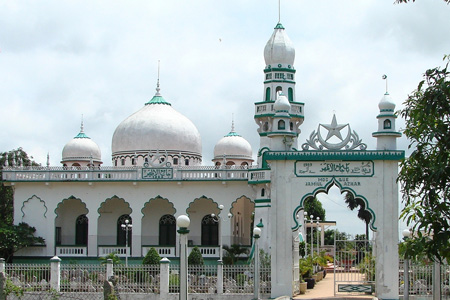Islam was born in the Arabian Peninsula in the early seventh century when the local tribal society was being transformed into a structured society, with a powerful theocratic feudal state designed to resist foreign invasion and to fight with Persia over the ancient East-West trade route through the Arabian Peninsula. The growth of Islam differs from other religions in that its rise to prominence arose from wars of conquest in which Prophet Muhammad played a decisive role.
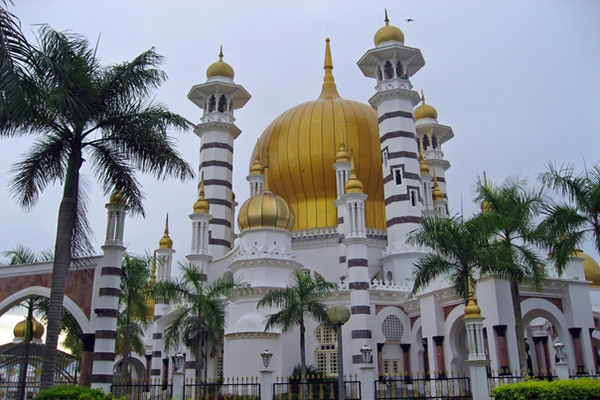
Overview of Islam
The Islamic doctrine, presented in the Koran, includes viewpoints on the world and people. It contains the factors of Arabian primitive beliefs as well as the creeds written in the Old Testament and the New Testament of the Bible. The Islamic doctrine includes a system of beliefs, such as the belief in Allah (God), his creation of the world and his great heart; the belief in the existence of the body and spirit and the sins of human beings; the belief in the Prophet Muhammad-the messenger of God-and his mission of redemption for mankind; the belief in angels and devils and in paradise and hell; the belief in the spirit's immortality; the belief at the end of the world, Easter Day and the Last Judgment; and the belief in the Koran's eternal existence.
In the early days of Islam, its canon laws were mainly based on the Koran. However, during its development, the need for new supplementary rules and practices arose out of the fact that Islam had to cope with other higher civilizations. Therefore, Sharia as the second Islamic canon law after the Koran was born. As Sharia derived from the Koran and Prophet Muhammad's teachings and examples, it has been considered the Islamic canon law. In fact, it has become the Islamic customary law. The Islamic canon law focuses on the observance of five basic duties, also called the Five Pillars of Islam, including displaying faith in God, praying, fasting during Ramadan, giving alms, and making the pilgrimage to Mecca. There are also some regulations about reciting and reading the Koran, as well as regulations on circumcision, marriage, obsequies, women, and conjugal life.
The Islamic canon law is very detailed and strict and has gone so far beyond religious matters that it has been regarded as the legal standard in the social life of Islamic followers and has controlled their activities. In countries where Islam is the national religion, the Islamic canon law is applied at different levels, but it is considered to be as important as the State law. Some countries even allow their government agencies to apply the Islamic canon law together with the civil and criminal laws enacted by the governments.
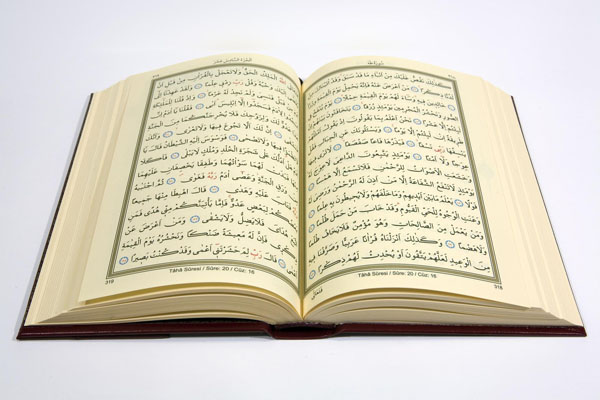
Islam was born in the Arabian Peninsula and expanded rapidly to West Asia, North Africa, the Mediterranean Sea, and India. Many of the Islamic communities in these areas were converted through wars and later missionary activities. Some historical researchers believe that the missionary process of Islam, especially in the early stage, was successful due to the numerous wars, along with the persistent indoctrination coupled with a decline in local beliefs and a desire to assume the beliefs of the ruling class and invaders.
The fact that the number of Muslims (1.3 billion) surpasses the number of Christians has helped Islam to become the world's largest religion. Islam is present in fifty countries in all continents, and the five regions that contain the highest numbers of believers are the Middle East, North Africa, West Asia, Central Asia, and Southeast Asia. In terms of the number of followers, there are 850 million Muslims in Asia, 350 million in Africa, 40 million in Europe, 12 million in America, and 1.5 million in Oceania.
Islam in Vietnam
Geographically, Southeast Asia is a region in the southeast part of Asia. It includes Brunei, Cambodia, East Timor, Indonesia, Laos, Malaysia, Myanmar, Singapore, the Philippines, Thailand, and Vietnam. It is 3,481,154 square kilometers with a total population of 536,265,000 people (according to statistics in 2000). It holds an important position in the world's economy, culture, and social affairs. In terms of religion, it is one of the main regions where Islam has developed considerably. Nearly 60 percent of its population follows Islam. In terms of each country's ratio of Muslims, it is 87 percent in Indonesia, 95 percent in Brunei, 55 percent in Malaysia, 17 percent in Singapore, 8 percent in the Philippines, 7 percent in Cambodia, 5 percent in Myanmar, and 4 percent in Thailand. However, the ratio is negligible in Vietnam.
Islam was first introduced into Southeast Asia in the early eleventh and twelfth centuries. In comparison to the propagation of Islam in other regions, the propagation of this religion in Southeast Asia was peaceful and mainly due to the influence of Arab, Indian, and Persian traders. During the first few centuries of Islam, it developed rapidly according to the formula summarized by historians as "Sword - Horse's hooves -Koran." However, after the conquest of India, the Islamic troops were tired. Besides, the immense seas and mountains were major obstacles to the Islamic warriors' movements toward Southeast Asia. Therefore, Islam mainly spread into Southeast Asia via traders and mullahs. Because Islam was spread and then developed in a peaceful way, Islamic beliefs in Southeast Asia were interwoven with local beliefs and customs. Due to the nature of Islam in Asia, Asia was less influenced by extreme Islamic ideas in comparison to other regions.
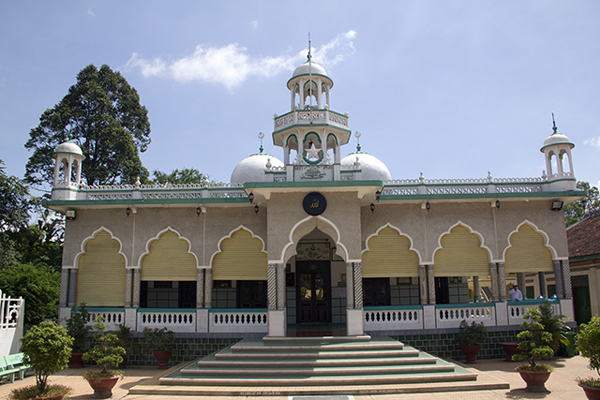
It took a long time to spread and develop Islam in Southeast Asia. The first place where Islam was introduced in Asia was the Malayan Peninsula and later northern Indonesia. The latest was eastern Indonesia, where Islam was introduced in the middle of the twentieth century. The penetration levels of Islam often coincided with regional historical events, such as the decline of the Champa Kingdom in Vietnam (in the fifteenth century) and the ancient kingdoms of Malacca (in the sixteenth century), as well as the appearance of colonialism in the region (the Portuguese, Spanish, English and French). Foreign invasion and colonization in Asia allowed Islam to take root in some areas as Islam was used as a symbol of the struggle for national liberation against Western imperialism.
In Vietnam, Islam was introduced to the Cham-one of the fifty-four Vietnamese ethnic groups. According to many legends and inscriptions, the Cham familiarized themselves with Islam as early as the tenth or eleventh centuries. It is also recorded in some historical documents of the Song Dynasty (China) that Islam appeared in Champa in the late tenth and early eleventh centuries. However, only after the historical event of Champa's decline in the middle of the fifteenth century did Islam become visible in the Cham community.
After the decline of Champa, the majority of the Cham people immigrated to Cambodia through three main routes: going across the Truong Son Range to Stung Treng; going toward the South (Vietnam) by land, and then boating up the Mekong River to Kompong Cham (Cambodia), and sailing down the South China Sea and bypassing Ca Mau Province (Vietnam) to reach Veal Renh and Kampot (Cambodia). In Cambodia, the Cham lived amongst the Malayan community (with the same Malayo- Polynesian languages) who followed Islam. Therefore, they were gradually converted from Brahmanism to Islam. These Cham people later came back to their native land and tried to persuade the rest of them to leave Brahmanism to follow Islam. However, since the Cham at that time were still under the great influence of the remnants of matriarchy and Brahmanism-their main religion, this Islamic propagation gained very few results. As a result, half of the Cham people here still followed Brahmanism.
Under the Nguyen Dynasty, the Nguyen army under the leadership of Truong Minh Giang-the protector of Chenla (Cambodia's former name)-was driven back to Chau Doc (Vietnam) by An Duong's army from Cambodia. They were followed by Cham and Malayan Muslims, who were mercenaries in the Nguyen army- At the same period of time, the revolt of Malayan and Cham people led by Tuon Set It (1854-1858) was unsuccessful. Therefore, they had to take refuge in Chau Doc (present-day An Giang Province). The Nguyen Dynasty relied on this force to establish its partisan groups to protect the border. Since then, Chau Doc has been the second area in Vietnam where Cham people followed Islam.
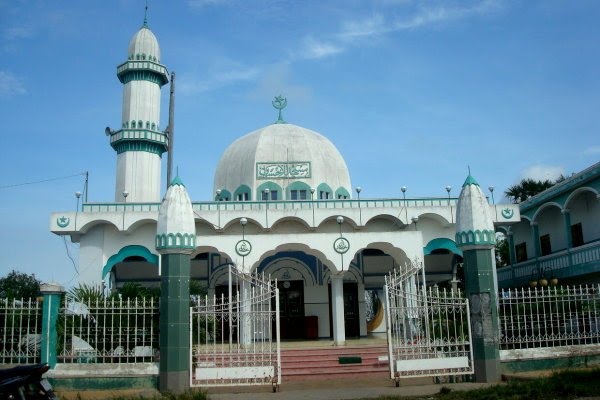
Other groups of Cham Muslims were founded for different reasons. The group in Tay Ninh was established in the eighteenth century after the flight of two Cham leaders from Cambodia. The group in Sai Gon (present-day Ho Chi Minh City) was founded during the invasion of French colonists as the result of immigration into the city. The group in Dong Nai was established when the government of the Republic of Vietnam pursued its "disperse the population" policy in the mid-1960s.
As a result of differences in geographical location, missionary context, living conditions, and level of exchange with the outside world, first and foremost the Islamic world, two different Cham communities following Islam were formed. The first community includes Islamic followers in Ninh Thuan and Binh Thuan. They are known as unorthodox Islamic followers or Cham Ba Ni. The other, known as orthodox Islamic followers or Cham Islam, includes Islamic followers in Chau Doc, Ho Chi Minh City, Tay Ninh, and Dong Nai. These names were used popularly in former publications and helped to distinguish them from the Cham people who still followed Brahmanism, called Ba Cham, in Ninh Thuan and Binh Thuan.
There are considerable religious differences between the two Cham communities following Islam, ranging from prayer books to creeds, rules, and rituals, as follows:
Islam in Ninh Thuan and Binh Thuan (Cham Ba Ni) has been degraded and become unorthodox due to the influence of local manners and customs over the religion, including Brahmanism's beliefs and the matriarchy. This situation has resulted in incorrect Islamic awareness. Cham Ba Ni put Muhammad on a par with fairies and regarded Mecca as a paradise for nymphs. Some people even consider Muhammad as Allah. They also believe that Allah Muhammad gave birth to the Cham people. The canon law has been deformed and has not been fully implemented. The Five Pillars of Islam, the main holidays, and the taboos of Islam are symbolically performed by Islamic dignitaries. The Muslims here live aloof and separately from the Islamic world. No one (not even the dignitaries) knows Arabic and they are unable to recite the Koran and Sharia. The Koran is adapted to texts for recitation in ceremonies. Cham Ba Ni does not follow the practice of circumcision (Sunat). Children, both male and female sexes, have to get their haircuts (Nga O Roh) at the age of sixteen to become the faithful. Under the great influence of the Brahmin castes, the dignitaries of Cham Ba Ni play an important role in the Cham Ba Ni community.
The dignitaries of Cham Ba Ni enjoy many material and spiritual interests and control the religious activities and social life of Cham Islamic followers. However, the scope of their influence is usually confined to the mosque. Moreover, in comparison to the typical role of women in the Islamic world, which is often subservient to men, female Islamic followers in Ninh Thuan and Binh Thuan are highly respected. Women have the right to go to the mosque like men. Female Muslims in Ninh Thuan and Binh Thuan are not confined to their homes nor required to wear the veil in public. They are free to marry whomever they choose, and the husband is required to live at his wife's home and depend upon his parents-in-law.
Islam in Chau Doc, Ho Chi Minh City, Tay Ninh, and Dong Nai seems to be contrary to that in Ninh Thuan and Binh Thuan in many aspects. The religious activities here are orthodox and eventful. The Islamic canon laws and rituals are fully obeyed. In particular, the Islamic community here has connections to the Islamic world through their pilgrimages to Mecca, and they send their children to schools in Malaysia, Indonesia, and Saudi Arabia. These actions have helped Islam to remain relatively intact. In the past, Chau Doc was considered to be a miniature version of the Islamic world in French-dominated Indochina. From the Islamic center of Chau Doc, Islamic education has been spread widely, even to areas like Cambodia.
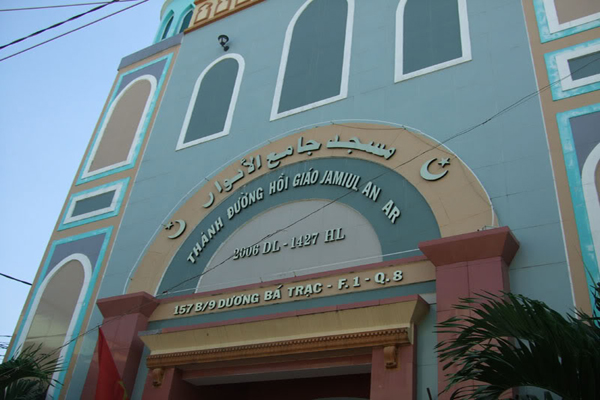
Malayans and Malaysian Islam have a great effect on Cham Muslims. Although there are not many Malayans living amongst Muslims in Chau Doc, their influence is still significant in many ways, from social structure to religious activities. In the past, the Koran was read in Arabic but recited in Malay. Islamic dignitaries and Koran teachers were mostly Malays. Most religious publications were also imported from Malaysia. Even the new religious movements were under the influence of the new religious movement in Malaysia. However, the influence of the Malays on Islam in different areas is not equal, being deepest in Chau Doc but less profound in Ho Chi Minh City, Tay Ninh, and Dong Nai.
In terms of organization, Islamic congregations are organized in every country. They are affected by the customs, historical traditions, and political institutions of each country. In Indochina, under the French domination, the supreme representative of Cham and Malayan Islamic communities was called Xiakh-Khul Islam. Under the Sai Gon regime, there was a post of Cham Assistant Chief in the Ministry of Ethnic Affairs. This post represented the entire Cham community (including followers of both Brahmanism and Islam). In the late 1950s and early 1960s, Ngo Dinh Diem's government approved the foundation of the Cham Vietnam Muslim Association (CVMA), along with the setting up of its head office in Sai Gon. At first, there were only three branches with several hundred members in the association. However, by 1964, branches had been established in every area under the influence of Cham Islam, and the total number of followers had risen to 15,000.
Together with the introduction of a new religious movement from Malaysia, the foundation of CVMA created an internal conflict between two factions—the old and the new. In the end, the two factions came to an amicable settlement with each other, through the foundation of a new association named Vietnam Council of Islamic Hakims (Hoi Dong Giao ca Hoi Giao Vietnam) with its head office based in Chau Doc. The CVMA was responsible for social affairs and its authority was mainly confined to Sai Gon and its neighboring areas, whereas the Vietnam Great Islamic Council mainly dealt with religious affairs and exerted influence primarily in Chau Doc. Both organizations, which existed until the liberation of South Vietnam, did not affect the Cham Ba Ni community but only the Cham Islam community.
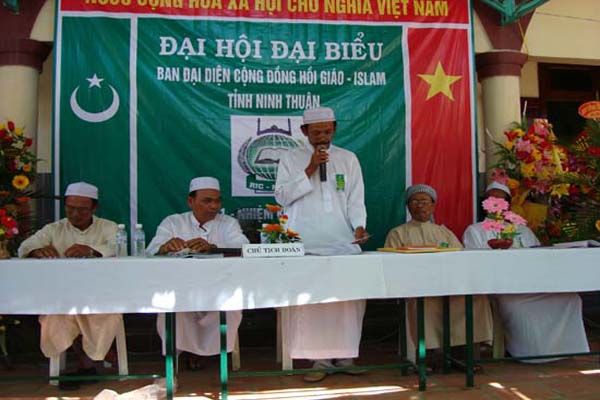
Due to the specific organizational characteristics of Islam in Vietnam, the orthodox Cham Islam and the unorthodox Cham Ba Ni operate separately. The orthodox Cham Islam sometimes reveals internal separation in terms of organization. Therefore, after the early stage of renovation (1986-1990), the Representative Board of the Islamic Community (Ban Dai dien Cong dong Hoi giao) was founded in Ho Chi Minh City in 1991. It was recognized by the People's Committee of Ho Chi Minh City through the promulgation of Decision No. 28/QD- UB dated January 7, 1992. The Board includes seven members, and each of its tenures lasts four years. It has experienced four tenures since its establishment.
After the promulgation of the Ordinance on Religion and Belief, the Islamic Representative Board of An Giang Province was recognized by the authorities of An Giang Province in 2006. In the same year, the Council of Cham Ba Ni Islamic Grus (Hoi dong Su ca Hoi giao Ba ni) was recognized by the authorities of Ninh Thuan Province. The Provisional Islamic Representative Board of Tay Ninh was recognized by the authorities of Tay Ninh Province in 2008.
According to the statistics of the Government Committee for Religious Affairs, in 2005 there were 64,991 Islamic followers (including 25,703 Cham Islam followers and 39,228 Cham Ba Ni followers), 695 dignitaries (including 288 Cham Islam dignitaries and 407 Cham Ba Ni dignitaries), and 77 mosques (including 41 Islamic mosques, 19 Islamic oratories, and 17 Ba Ni mosques). Islamic followers are concentrated in Ho' Chi Minh City and the provinces of Ninh Thuan, Binh Thuan, An Giang, Tay Ninh, and Dong Nai.
In Vietnam, the number of Islamic followers is much smaller than those of other religions. Moreover, the Vietnamese Islamic community is an insignificant minority in comparison to other Islamic communities around the world. However, Vietnamese Islam is closely related to the Cham with cultural and historical characteristics. Although Islam is not the same in different areas, it has contributed to the cultural and customary characteristics of the Cham people.

